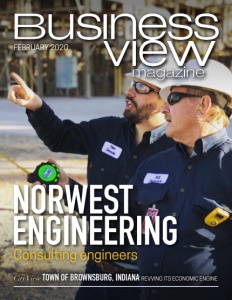The largest and most acclaimed companies in the world all began as dubious startups. Apple had its origins in a garage; so did Amazon, Microsoft, Hewlett-Packard, and the Walt Disney Co. Both Google and Facebook began in dorm rooms. Under Armour was set in motion in a basement, after which 23-year-old Kevin Plank sold his innovative sports shirts from the trunk of his car.
Now that these firms are billion-dollar behemoths, it’s safe to say that their prominence in their respective sectors is unassailable. But is it? Can it still be possible to begin a brand new company capable of taking on an established giant? The simple answer is: “Yes.” The reality is that new startups are sprouting up every day and there’s always room for a new David to come along to challenge, and even floor, some industrial or commercial Goliath.
That’s exactly what happened in 2012 to Michael Dubin, up to that time a failed entrepreneur, who happened to post a short video about his latest startup – a company that no one had ever heard of before called Dollar Shave Club. Its MO was to purchase razor blades from a South Korean supplier and sell them at half the price of Gillette’s – at that time, the undisputed market leader with 70 percent of the country’s razor sales. Dubin’s video went viral, orders started cascading in and, against all odds, Dollar Shave Club went on to succeed wildly, with annual sales approaching $200 million when it was acquired by Unilever for $1 billion in 2016.
Dubin’s success helped define the new business model for 21st century entrepreneurs: a world where technology and globalization helps to level the playing field. Dubin didn’t need a big advertising budget to get the attention of consumers – just a witty, one minute, 33-second video. He didn’t need a manufacturing plant, a research and development team, or a name-brand retailer to carry his product. By targeting a corporate giant’s weakness – in this case high prices – he was able to reach a new generation of consumers who were accustomed to buying things online and had no particular loyalty to a legacy brand.
This direct-to-consumer revolution has upended the marketplace, starting with just a handful of startups, then dozens, hundreds, and even thousands more “unicorns” kicking up their heels. In fact, between 2013 and 2017, some $17 billion in sales has shifted from big consumer brands to smaller ones, and one report on the top 100 consumer product brands found that 90 percent of them had lost market share in recent years. In 2018, small and medium-size companies sold $160 billion in goods on Amazon, alone – up from just $100 million in 1999, a 1,600-fold increase. And today, the market for consumer products isn’t just billions or even hundreds of billions, but rather several trillion dollars a year in the U.S. alone.
So, if you are an entrepreneur with a good idea, and perhaps a garage or basement in which to tinker, get your slingshots ready and get to work. And while you’re at it, think of some of the new brands that were just as unknown as you are now, a mere several years ago, including: Caspar (mattresses), ThirdLove (bras), Quip (electric toothbrushes), Away (luggage), Allbirds (sneakers), Ritual (vitamins), Farmer’s Dog (pet food), and Lensabl (eyeglasses), among many others. You just might be a short YouTube video away from membership in the newest billion-dollar club.

